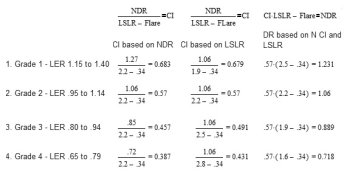Piu 58,
I beg to differ.
Although the Zone System (and any other exposure/development system for that matter) aims for "correctly" exposed and developed negatives, the original purpose for developing the Zone System was as a tool for visualizing the final print. Fitting the contrast range of the scene onto the negative is just Zone System 101, i.e., only the first step. The real advantage of the system is that it allows you to better tailor the negative to your vision of what the final print should look like.
Therefore, if, as in your example, you want a to "show harsh or pronounced texture." You should be taking this into account when exposing the negative and deciding on development and paper grade (BTW, I usually indicate targeted paper grade on my exposure record).
And, at the time of exposure, you will know that you will "have a lot of work with dodging and burning then." However, the better you know your materials, more you will be able to refine exposure and development and anticipate what problems achieving your visualized print will entail.
And, to address the OP and to add to Ralph's and others' excellent comments.
As mentioned, "N" development (which you arrive at for your particular situation) is arrived at by
testing. Once you have this, a scene of "Normal" contrast will print on what you have chosen for your "Normal" contrast grade (as you can see, it gets a bit arbitrary... maybe you shoot roll film and want grade 3 as "Normal," maybe, for sheet film, you want grade 2 or 2.5 for "Normal.")
Thereafter, N+ and N- exposure and development schemes are calibrated (by testing) so that scenes of lesser or greater contrast print well on your "Normal" contrast paper. The Zone System has a margin of error of approximately one "N number" i.e., one Zone (no need for N+1/3 or N- 1 1/2...). Fine tuning within this margin of error is done by contrast control when printing, either by changing grade or development or both.
So, to finally get around to your question: N+1 is not usually the same as one contrast grade of paper. That is to say, if you have two identical negatives and you process one at N development and it prints well on grade 3 paper, developing the other at N+1 will not necessarily enable you to get the same print from grade 2 paper.
The whole purpose of N+1 was to get the original negative to yield a print on your "Normal" contrast paper, which is something different.
Also, if you take three identical negatives and develop them N, N+1 and N-1 (having made the appropriate exposure compensation at the time of exposure), you will find differences in prints from the neg developed N and made on grade 2 paper, the N+1 negative printed on grade 1 and the N-1 neg printed on grade 3. These differences, depending on your materials, can be significantly different in contrast and will certainly be different in terms of how the contrast range in the negative is spread out over the tonal scale of the paper.
If your negatives are consistently not printing well on you chosen "Normal" paper, you need to adjust your development to compensate. The aim is to get close to perfect negatives (within the one-Zone margin of error) so you don't end up with lots of negatives that need extreme contrast grades (even though all of us have a few of those from time to time...). In your case, you would need to increase development to increase contrast. However, that is not moving from N to N+1; there is no "standard" N+1; it all depends on your situation and materials and must be personally tested. Your question, "Will +1 development do the trick?" presupposes some kind of N+1 standard and is, therefore, based on a false premise.
Finally, yes, different papers have slightly different contrast ranges and tonal distributions for the "same" paper grade; all grade 2s are not the same. However, these differences are usually well within the one-Zone margin of error built into the Zone System. Small refinements like these are what contrast control during printing is for. And, there is no real standard way to compensate for these small differences in contrast except through the art of printing. (Although, you can use them to your advantage; a print that is a bit soft on one grade 2 paper often has just the right amount of extra zip on another grade 2 paper.)
The creative adjustments made during printing to contrast, image tone, tonal placement, including dodging, burning, bleaching etc. fall into the realm of artistic refinement; adjustments made to make a print "sing" in order to give it the desired emotional impact. If you have tested and calibrated your negative exposure and development (either extensively, as with the Zone System, or less so, as in Ralph's guidelines and empirical "tweaking"), you should have negatives that allow you to use all the printing manipulations at your disposal to achieve this. That is the purpose of the Zone System and other exposure/development systems. If you haven't, you will find that achieving your goal is often seriously hampered by negatives that are, in essence, unprintable to your satisfaction.
Sorry this turned out so long, but good luck.
Best
Doremus Scudder
www.DoremusScudder.com











